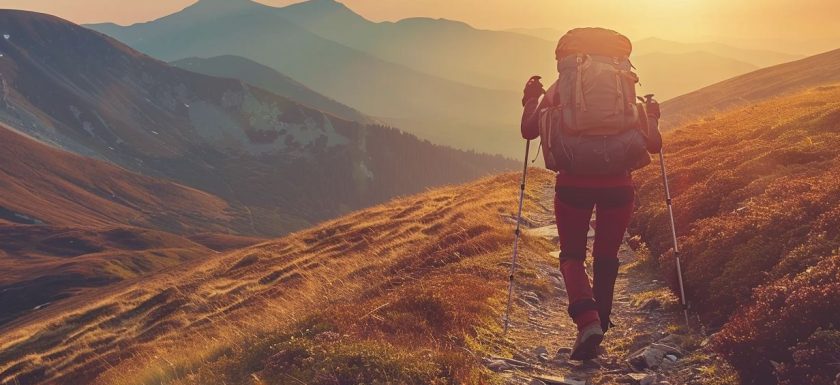
Are you ready to take on the challenge of climbing Kilimanjaro? In this comprehensive guide, we will explore the best ways to train for this epic adventure.
From setting goals and creating a training plan to building endurance and stamina, we will cover everything you need to know to prepare physically for the climb.
We will also discuss what to pack for Kilimanjaro, including essential gear and equipment, proper clothing, and nutrition tips.
We will address the physical challenges of Kilimanjaro, such as altitude sickness and extreme temperatures, and offer advice on how to prepare mentally for the climb.
Stay tuned for our conclusion, where we will provide tips for a successful climb up the majestic Kilimanjaro.
Key Takeaways:
- Create a training plan with goals to build endurance, stamina and strengthen muscles and core.
- Pack essential gear and proper clothing for extreme temperatures, altitude sickness, and long distances.
- Mentally prepare by managing expectations, dealing with fear and anxiety and staying motivated and positive for a successful climb.
What is the Best Way to Train for Kilimanjaro?
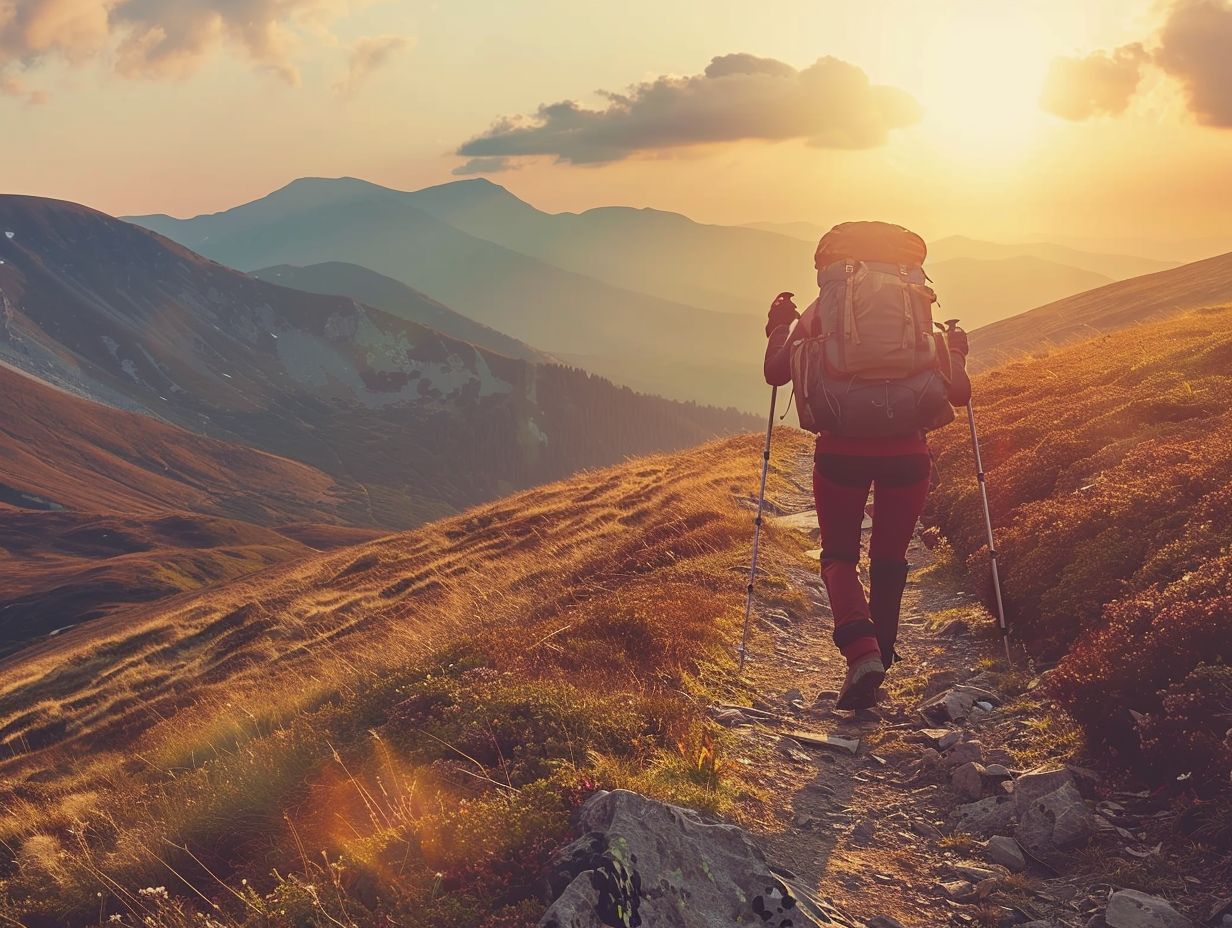
Preparing for a Kilimanjaro trek involves a comprehensive training regimen to build endurance, strength and resilience for the challenges of summiting Africa’s highest peak.
Ian Taylor Trekking, known for expert guidance, recommends a structured fitness program tailored to Kilimanjaro’s demands, including elevation gains and long hikes.
A key aspect of preparing for a Kilimanjaro trek is setting specific goals and creating a personalized training plan that aligns with the rigorous requirements of the climb.
Setting specific goals ensures that you focus on areas that need improvement, such as cardiovascular endurance, leg strength, and mental preparedness. Your training plan should include daily sessions targeting different aspects of fitness, from cardio exercises to strength training routines.
Integrating fitness tests into your regimen can help track progress and identify areas for improvement. These tests can range from timed hikes to bodyweight exercises designed to mimic the physical demands of climbing Kilimanjaro.
Gym sessions focusing on core strength and flexibility can also be beneficial in enhancing overall fitness and reducing the risk of injuries during the trek.
Setting Goals and Creating a Training Plan
To conquer Kilimanjaro successfully, setting clear goals and devising a detailed training plan are fundamental. With Ian Taylor Trekking’s guidance, create a personalized fitness program that aligns with the specific demands of mountain trekking, ensuring long-term success on Kilimanjaro.
Establishing achievable goals is crucial in preparing for a Kilimanjaro trek. Begin by setting a realistic timeline for your training and trekking endeavors. Break down your goals into smaller milestones to track progress effectively.
When structuring your training program, focus on building endurance, strength, and flexibility to withstand the challenges of the trek. Incorporate varied training routines and gradually increase intensity to simulate the demands of high-altitude hiking.
Seeking advice from renowned organizations such as Ian Taylor Trekking can provide valuable insights into proper gear selection, acclimatization techniques, and safety precautions for a successful Kilimanjaro expedition.
Building Endurance and Stamina
Enhancing endurance and stamina is crucial for Kilimanjaro preparation. Incorporate daily training routines elevation gain exercises, fitness tests, and specialized equipment like Stairmasters under expert guidance to ensure optimal physical readiness for the trek.
Consistency is key when it comes to building endurance. Gradually increase the intensity and duration of your workouts to challenge your body and build stamina.
Interval training, where you alternate between high and low intensity, can be particularly effective in boosting endurance levels. Incorporating strength training exercises, such as squats and lunges, can help improve muscle endurance which is essential for long treks like Kilimanjaro.
Remember to listen to your body and rest when needed to prevent injuries.
Strengthening Muscles and Core
Strengthening muscles and core stability is essential for Kilimanjaro’s physical demands. Engage in long hikes, specialized workouts recommended by Ian Taylor Trekking, fitness programs, and gym training to fortify key muscle groups and enhance overall strength.
Without adequate muscle and core strength trekkers risk fatigue, lack of endurance and potential injuries on the challenging terrain of Kilimanjaro.
Incorporating exercises like lunges, squats, planks, and deadlifts into your training regime can target the specific muscle groups required for uphill climbs and high-altitude trekking.
A balanced gym program that includes cardio, strength training, and flexibility exercises will prepare your body for sustained physical exertion during the trek.
Practicing Hiking and Trekking
Regular practice of hiking and trekking is invaluable for Kilimanjaro readiness.
Following guidance from renowned experts such as Scott Johnston and Alpine Ascents is crucial for those aspiring to conquer Kilimanjaro’s challenging terrain.
Incorporating structured walking programs not only helps in simulating trekking conditions but also plays a significant role in boosting overall physical conditioning.
Consistent hiking and trekking practice are known to improve cardiovascular fitness, enhance muscle strength and increase endurance levels.
Spending time in nature while trekking offers mental health benefits including stress reduction and improved mood.
What to Pack for Kilimanjaro?
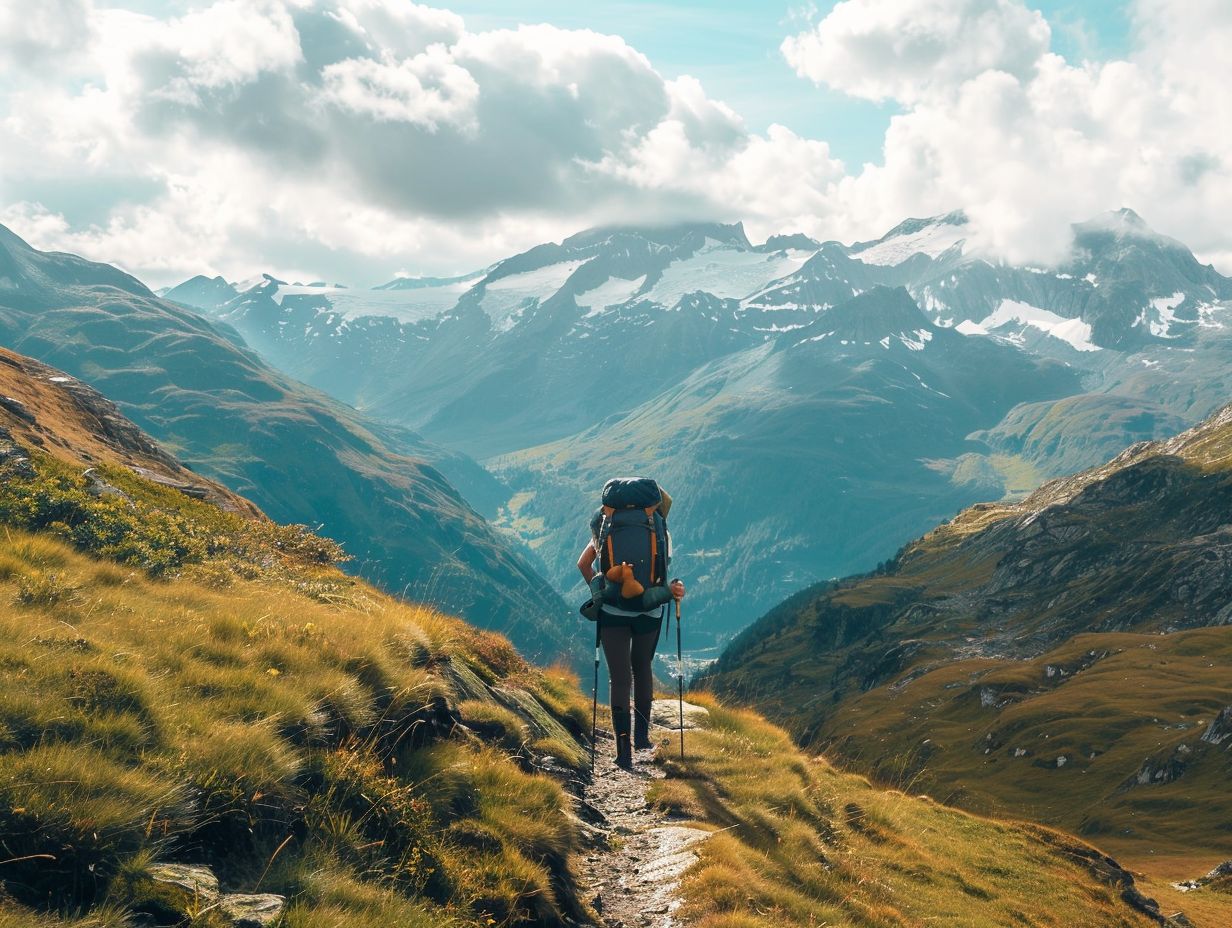
Packing for a Kilimanjaro expedition requires careful consideration of essential gear, proper clothing, and adequate nutrition and hydration. Ensuring you have the right equipment and sustenance is vital for a successful trek up the Roof of Africa.
Starting with essential gear, make sure to include high-quality trekking boots, warm layers, waterproof jacket and pants, a headlamp, sunglasses and a comfortable backpack.
Proper clothing is crucial due to the varying climates you will encounter – from hot savannah to freezing summit temperatures. Layering is key for temperature regulation.
Nutrition and hydration are equally important on the challenging ascent. Pack energy bars, dried fruits, nuts, electrolyte tablets and a refillable water bottle to keep your energy levels up and stay hydrated throughout the journey.
Essential Gear and Equipment
Selecting the right gear and equipment is crucial for Kilimanjaro expeditions. Follow recommendations from experts like Scott Johnston and Alpine Ascents to ensure you have the necessary tools for safety and comfort during the trek.
Having the right gear is paramount for conquering Kilimanjaro’s diverse terrain and challenging weather conditions. Start with proper footwear to support your feet throughout the journey.
Invest in insulated clothing to combat the fluctuating temperatures, and don’t forget a reliable headlamp for navigating in low light. Pack a durable backpack to carry essentials and ensure hydration with a hydration system or water bottles.
Trekking poles can aid in stability on steep slopes, and a quality sleeping bag and tent are vital for resting well each night.
Proper Clothing and Footwear
Choosing appropriate clothing and footwear is essential when preparing for a Kilimanjaro adventure. Consider the varied climates and terrains you’ll encounter, ensuring you are equipped for optimal performance and comfort, even beyond the Materuni Falls.
On your journey, from the lush rainforests to the alpine desert and finally the arctic summit, proper gear will make a world of difference.
Start with moisture-wicking base layers that regulate temperature and keep you dry during intense ascents and sudden rains. Layer up with insulating mid-layers and a waterproof, breathable jacket to combat changing temperatures and high altitudes.
Don’t forget about your extremities – thick socks, sturdy hiking boots with ankle support and gloves will protect you from frostbite and blisters as you brave the diverse Kilimanjaro landscapes.
Nutrition and Hydration
Maintaining proper nutrition and hydration levels is vital for Kilimanjaro climbs. Plan your meals and water intake meticulously to support your physical demands and increase your chances of success on the challenging slopes of Mount Kilimanjaro.
When embarking on a Kilimanjaro trek, you are pushing your body to its limits. Proper nutrition is like fuel for your engine; it provides the energy needed to conquer those steep paths and high altitudes.
Hydration is equally essential as it helps regulate body temperature, combat altitude sickness, and maintain stamina.
Opt for nutrient-dense foods such as nuts, dried fruits, whole grains, and protein sources like beans or lean meats. High-calorie snacks like energy bars are great for quick bursts of energy. Meal planning is key here, focusing on a balance of carbohydrates, proteins and healthy fats.
What Are the Physical Challenges of Kilimanjaro?
Climbing Kilimanjaro poses several physical challenges including altitude sickness, extreme temperature variations, long distances to cover and steep inclines. Overcoming these obstacles demands physical preparedness and mental resilience.
Altitude sickness, a common issue on such high-altitude treks, can lead to headaches, nausea and fatigue. To combat this, climbers are advised to acclimatize gradually, stay hydrated and listen to their bodies for signs of distress.
Managing the extreme temperature shifts, from scorching sun during the day to freezing nights, requires appropriate layering of clothing and gear to regulate body temperature effectively.
When facing the strenuous terrains and steep inclines, proper training, such as cardiovascular exercises and strength conditioning becomes crucial in building endurance and muscle strength to tackle the demanding ascent.
Altitude Sickness
Altitude sickness is a common concern on Kilimanjaro due to the rapid altitude gain. Seek medical advice, acclimatize properly and stay hydrated to mitigate the effects of altitude sickness and increase your chances of success on the climb.
Altitude sickness, also known as acute mountain sickness (AMS), occurs when ascending to high altitudes too quickly, not allowing the body enough time to adjust to lower oxygen levels.
Symptoms can include headache, nausea, fatigue and dizziness among others. It is crucial to pay attention to your body’s signals and not ignore any signs of AMS while climbing Kilimanjaro.
Prevention is key; gradual ascent, proper acclimatization days, and staying well-hydrated can help reduce the risk of altitude sickness. If symptoms persist, descending to a lower altitude is recommended to avoid severe effects.
Extreme Temperatures
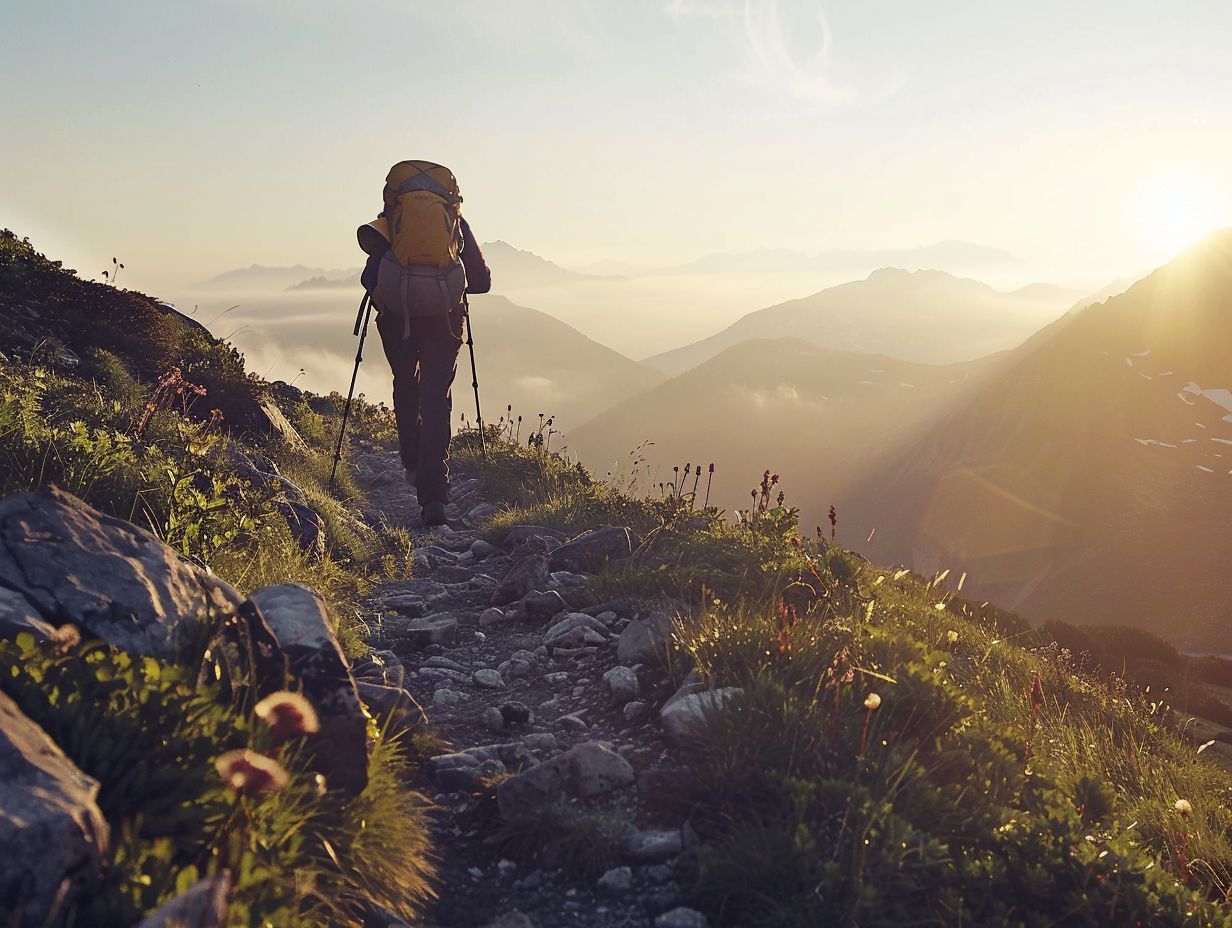
Kilimanjaro’s varying climates expose trekkers to extreme temperatures, from scorching heat to freezing cold.
One of the key challenges climbers face on Kilimanjaro is the rapid change in temperature as they ascend the mountain. It’s crucial to dress in layers to easily adjust to these fluctuations.
Starting with a moisture-wicking base layer to keep dry, adding an insulating mid-layer for warmth, and a waterproof outer shell for protection against wind and rain is highly recommended.
Investing in quality trekking gear such as insulated jackets, gloves, and hats can make a significant difference in your comfort level. Managing your body temperature effectively by shedding or adding layers as needed ensures that you stay comfortable and safe throughout your adventure.
Long Distance and Steep Inclines
Tackling Kilimanjaro involves covering long distances and navigating steep inclines, requiring physical endurance and mental fortitude. Implement a rigorous training program, including fitness tests, to prepare for the demanding distances and challenging ascents.
While endurance training is crucial for Kilimanjaro, don’t forget about strength training to handle the steep inclines. Incorporate exercises targeting your legs, core and back to build the necessary strength for the trek.
- Include a mix of cardiovascular exercises like running or cycling to improve endurance.
- Simulate the trekking conditions by hiking on hilly terrain with a loaded backpack to accustom your body to the strain.
- Focus on flexibility and balance exercises to reduce the risk of injuries during the trek.
Remember, mental preparation is equally important. Practice visualization techniques envisioning yourself conquering the challenges on Kilimanjaro, and stay positive throughout your training.
How to Prepare Mentally for Kilimanjaro?
Mental preparation is key for a successful Kilimanjaro ascent, requiring a positive mindset, mental toughness and emotional readiness to overcome challenges. Ian Taylor and Scott Johnston emphasize the importance of mental conditioning alongside physical training for summit night and beyond.
When facing the unpredictable terrain and altitude changes on Kilimanjaro, having a resilient mindset becomes paramount. Visualizing the trek, setting realistic goals, and accepting that there will be tough moments are all part of mental preparation.
Staying present in the moment and focusing on small victories can help manage the mental strain of the climb.
- To build mental toughness, incorporating practices like meditation, mindfulness, or positive affirmations into your daily routine can strengthen your mental resilience for the challenges ahead.
- It’s crucial to acknowledge that setbacks and obstacles are part of the journey and being mentally prepared to adapt and problem-solve in high-pressure situations is vital for success during the ascent.
Managing Expectations and Mental Toughness
Effective management of expectations and cultivating mental toughness are essential for Kilimanjaro achievements. Advice from experts like Scott Johnston and Alpine Ascents can help you maintain a positive mindset and navigate challenging moments throughout the climb.
When embarking on a Kilimanjaro expedition, mental preparation plays a crucial role in determining the success of your journey. Keeping a realistic outlook on the challenges ahead and understanding the unpredictable nature of high-altitude trekking can greatly impact your overall experience.
Scott Johnston, a seasoned mountaineer, emphasizes the significance of developing a resilient mindset that can withstand the physical and mental demands of the climb.
Dealing with Fear and Anxiety
Overcoming fear and anxiety is crucial for a triumphant Kilimanjaro journey. Implement relaxation techniques, positive visualization and preparation strategies to address emotional challenges and maintain focus on the path to summiting Africa’s highest peak.
Incorporating mindful breathing exercises can help in moments of panic or uncertainty, allowing climbers to ground themselves and regain composure amidst the awe-inspiring surroundings of Kilimanjaro.
Setting realistic goals and breaking down the trek into manageable segments can alleviate feelings of overwhelm and keep spirits high throughout the ascent.
Fostering a supportive team dynamic within the climbing group can also provide emotional reassurance and shared strength, fostering camaraderie and a sense of unity in facing the challenges ahead.
Staying Motivated and Positive
Sustaining motivation and fostering a positive attitude are vital for conquering Kilimanjaro’s challenges. Draw inspiration from experts like Ian Taylor Trekking cultivate mental resilience, and maintain a determined outlook to navigate the demanding terrain and reach the summit.
When embarking on a Kilimanjaro climb, remember that setbacks are part of the journey, and staying focused on the end goal is key.
Practice mindfulness techniques to stay present and appreciate the breathtaking surroundings of the mountain, which can uplift your spirits and energize your resolve.
Setting small achievable milestones along the trek can provide a sense of accomplishment and keep you motivated for the long haul.
Conclusion: Tips for a Successful Climb
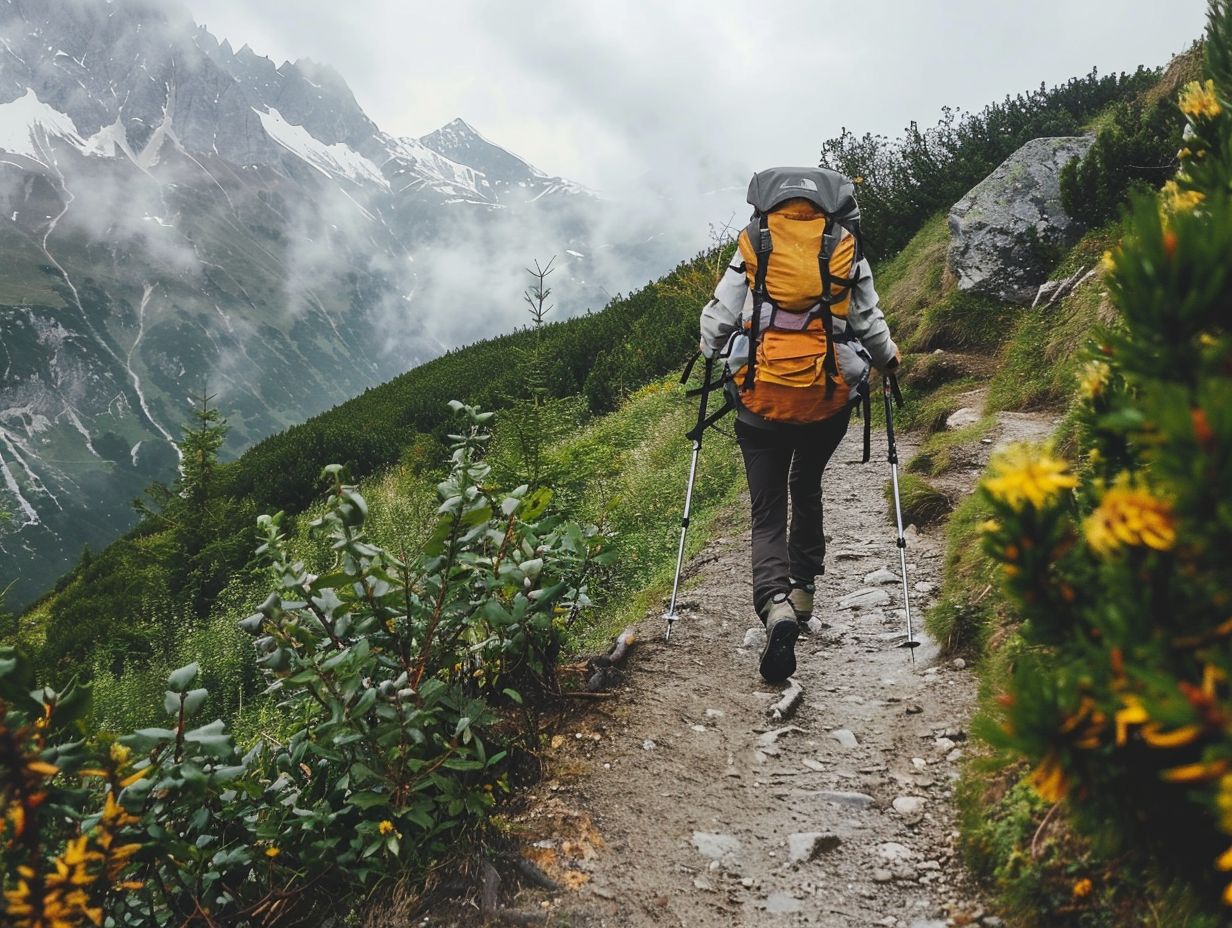
Achieving success on Kilimanjaro requires a holistic approach encompassing physical training, mental fortitude and expert guidance. Prepare diligently, stay focused on summit night and draw strength from organizations like Alpine Ascents to ensure a safe and rewarding climb.
To start your Kilimanjaro journey, begin with a comprehensive fitness regimen that targets endurance and strength-building exercises. Strengthening your legs, core, and cardiovascular system will be essential for enduring the demanding trek.
Mental preparation plays a crucial role in facing challenges at high altitudes, so practice mindfulness and meditation techniques to enhance focus and resilience during the ascent.
Familiarize yourself with the terrain and weather conditions of Kilimanjaro to equip yourself with the necessary knowledge. Consider seeking guidance from experienced mountaineering professionals to navigate the complexities of the climb and ensure a successful summit.
Frequently Asked Questions
How To Train For Kilimanjaro
What is the recommended fitness level for climbing Kilimanjaro?
It is recommended to have a moderate to high level of physical fitness in order to successfully summit Kilimanjaro.
How To Train For Kilimanjaro
What are some specific exercises I can do to train for Kilimanjaro?
Some exercises that are beneficial for training for Kilimanjaro include hiking, running, stair climbing, and strength training.
How To Train For Kilimanjaro
How long should I train for Kilimanjaro before attempting the climb?
It is recommended to train for at least 3-6 months before attempting to climb Kilimanjaro in order to build up endurance and strength.
How To Train For Kilimanjaro
Are there any altitude training methods that can help prepare for Kilimanjaro?
Yes, altitude training methods such as sleeping in a high altitude tent or participating in high altitude training hikes can help prepare for Kilimanjaro.
How To Train For Kilimanjaro
How important is mental preparation when training for Kilimanjaro?
Mental preparation is just as important as physical preparation when training for Kilimanjaro. It is important to have a positive mindset and mental fortitude for the challenges that come with climbing a mountain.
How To Train For Kilimanjaro
What is the best way to track progress while training for Kilimanjaro?
Keeping a training journal and tracking metrics such as distance, elevation gain and time can help track progress and make adjustments to training for optimal results.